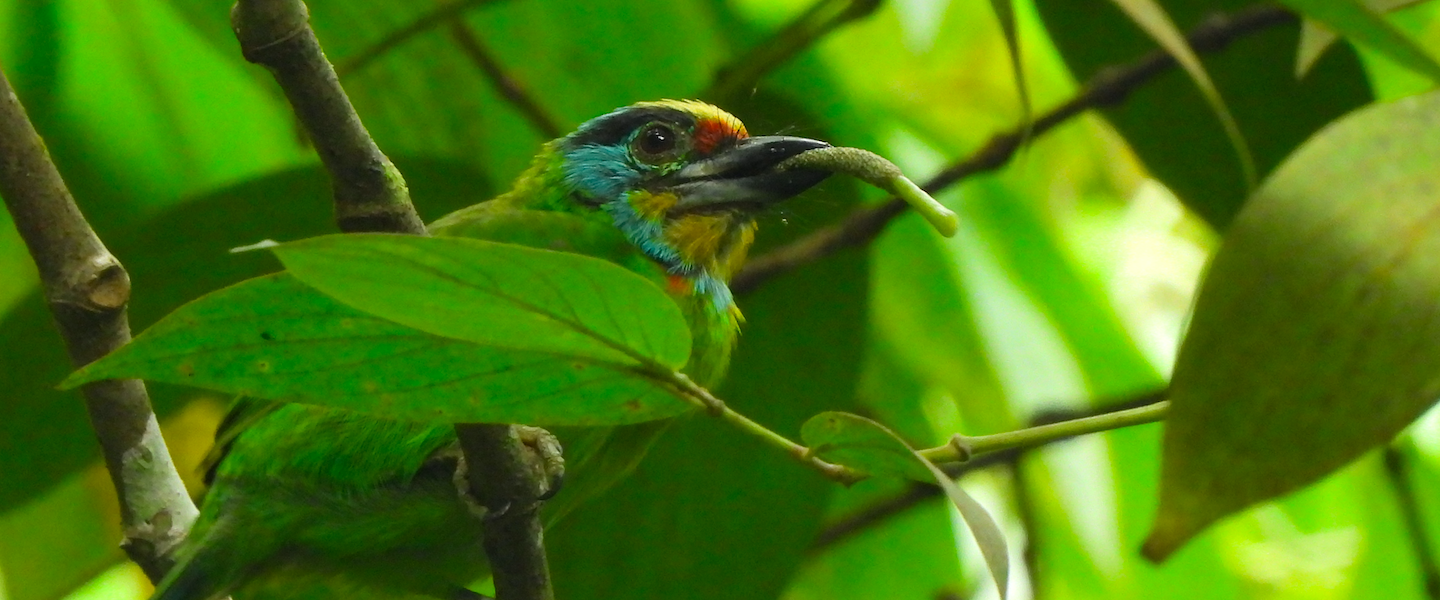The winds have finally brought storms to the Spanish Levante. For several days now, I’ve been joining Marina Climent and Jorge Verdú on several outings, exploring new birding spots and spending time together. On Monday, we joined some bird ringers and were lucky enough to catch a Eurasian skylark (Alauda arvensis) at night. Yesterday, a quick stop by the sea in Santa Pola, dodging dark clouds, brought a curious find: a Mediterranean moray (Muraena helena) stranded offshore. But today, our adventures took us south of Alicante province, to the scenic rocky shores of Cabo Cervera, near Torrevieja.
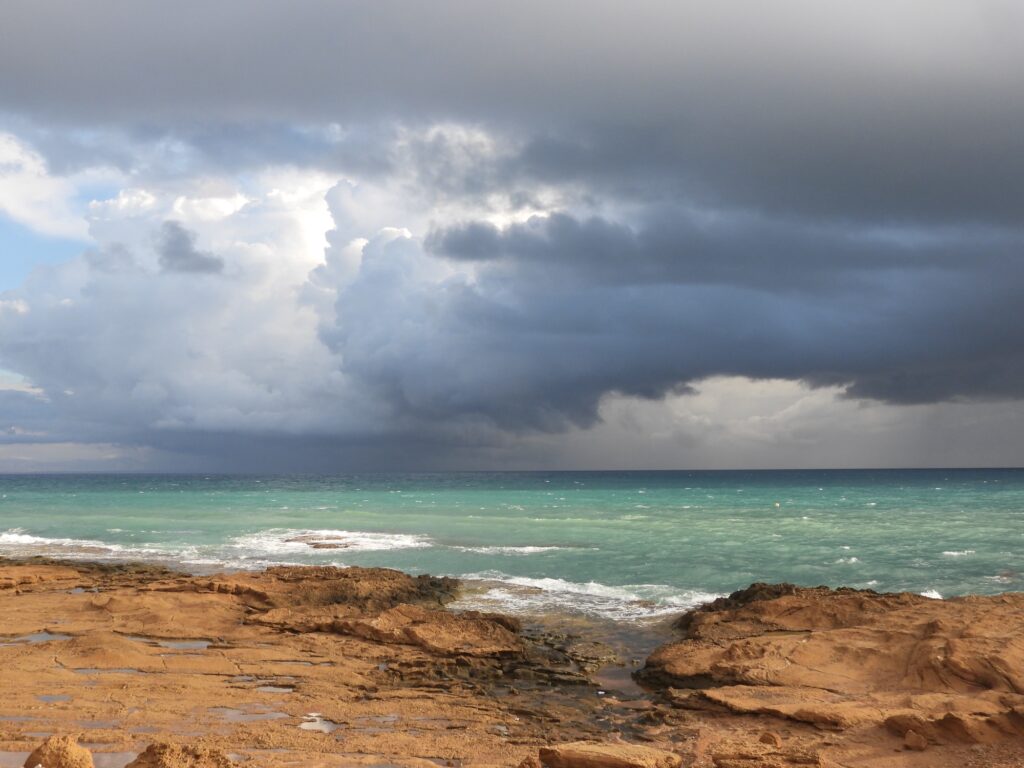
Veles e vents is a Valencian poem from the 15th century, narrating an epic journey across these very waters in search of requited love. The knight-poet Ausiàs March found himself in peril while sailing and begged the winds for safe passage to shore — winds that seemed to blow from nearly mythical lands. Today, the landscape felt like a modern echo of that ancient tale: storms stirred by powerful winds and birds flying in and out like sailors seeking refuge on the rocky coastline. It was a scene straight out of legend, one that begged to be photographed and written about.
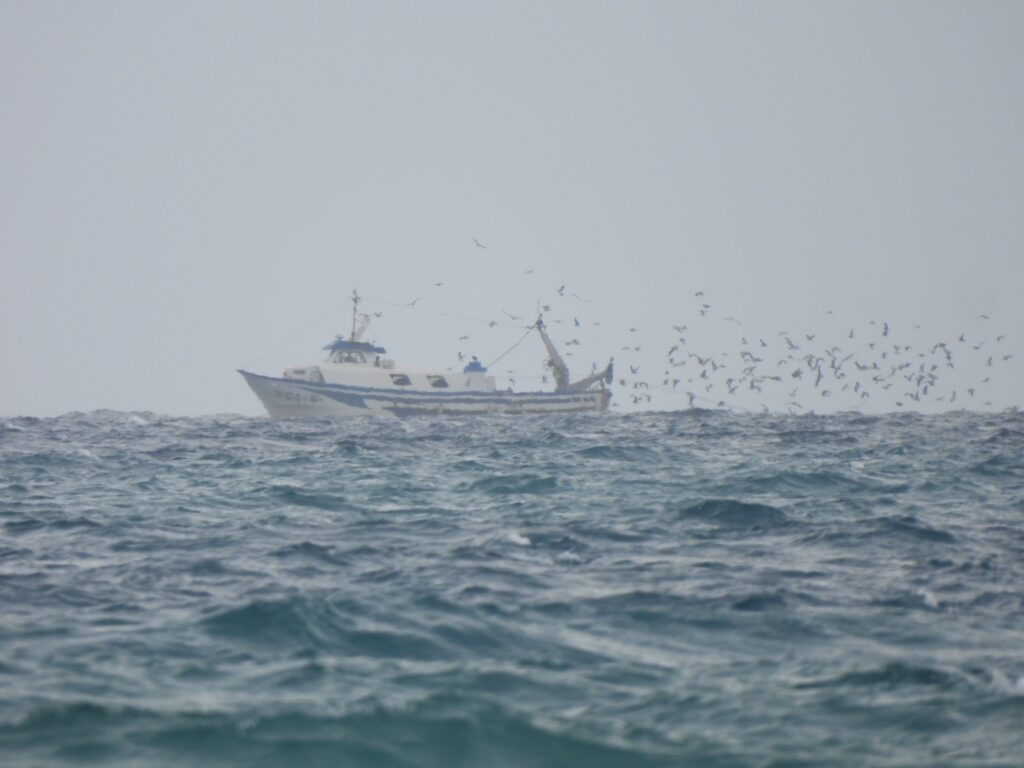
On our first-ever visit to Cabo Cervera, we began by strolling through an urban park by the sea. Sardinian warblers (Curruca melanocephala), blackcaps (Sylvia atricapilla) and European robins (Erithacus rubecula) flitted through the vegetation, seemingly undisturbed by a nearby colony of cats. Migration had also brought chaffinches (Fringilla coelebs), a song thrush (Turdus philomelos) mingling with blackbirds (Turdus merula) and several European starlings (Sturnus vulgaris), feeding alongside spotless starlings (Sturnus unicolor) and numerous monk parakeets (Myiopsitta monachus). Overseeing all this was a male Eurasian kestrel (Falco tinnunculus), perched on a rooftop, keeping a watchful eye on the activity below.
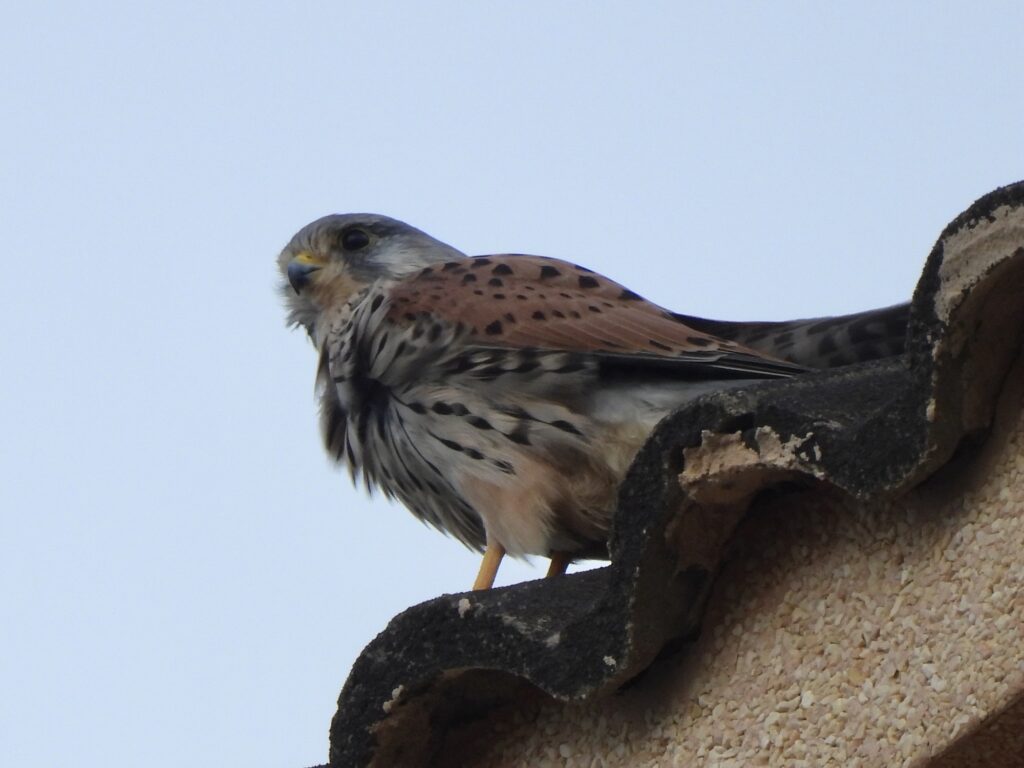
A first glance at the sea brought an exciting sight: a first-year gannet (Morus bassanus) struggling against the strong winds close to shore. Despite the distant views of more gannets and various gulls, the heavy winds, accompanied by a light shower that turned into a steady rain, made birdwatching challenging. Still, the intermittent breaks in the clouds offered a magnificent show of lights and shades of blue.
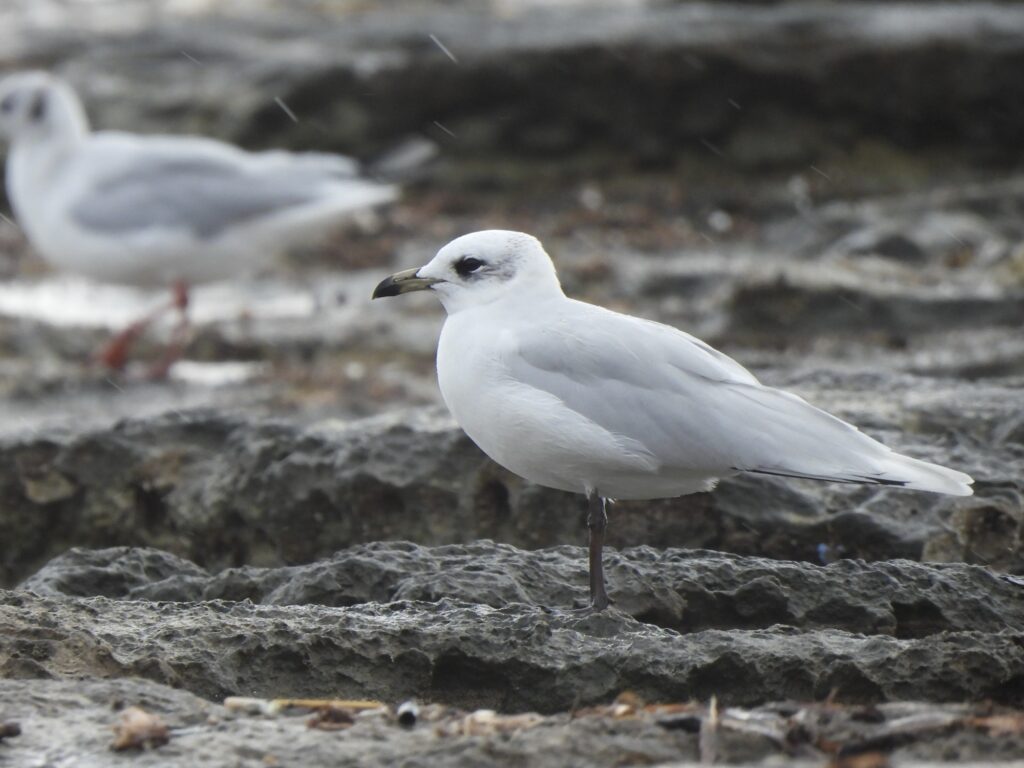
We took refuge in a nearby café with glass windows, perfect for birdwatching over breakfast. From there, we spotted ruddy turnstones (Arenaria interpres) and yellow-legged gulls (Larus michahellis) flying about, while a little egret (Egretta garzetta) calmly fished nearby. Once the rain subsided, we ventured back out along the rocky shoreline, walking through occasional drizzles.
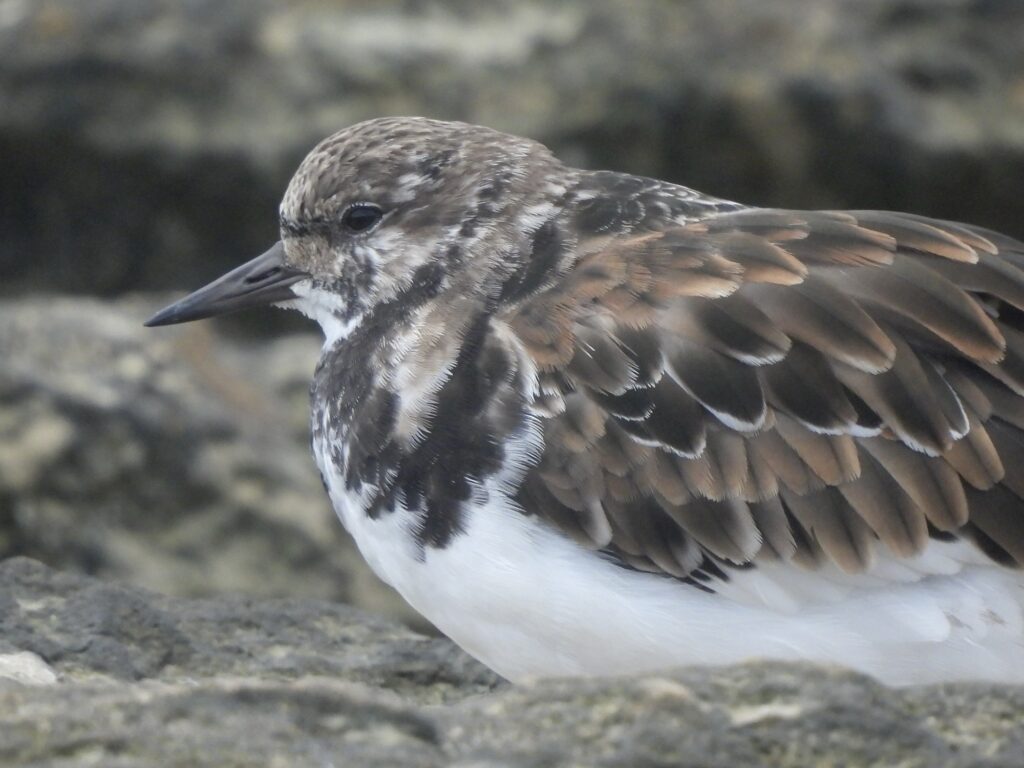
The shoreline became a stage for a gull-watching session, where we observed nearly every species of gull commonly found along this part of the Mediterranean. It’s always a pleasure to see Audouin’s gulls (Ichthyaetus audouinii) resting among the other gulls. They make things easier for us birders, being mid-sized and standing out from both the larger yellow-legged and lesser black-backed gulls (Larus fuscus) and the smaller species. Their sleek, elegant appearance only adds to their appeal.
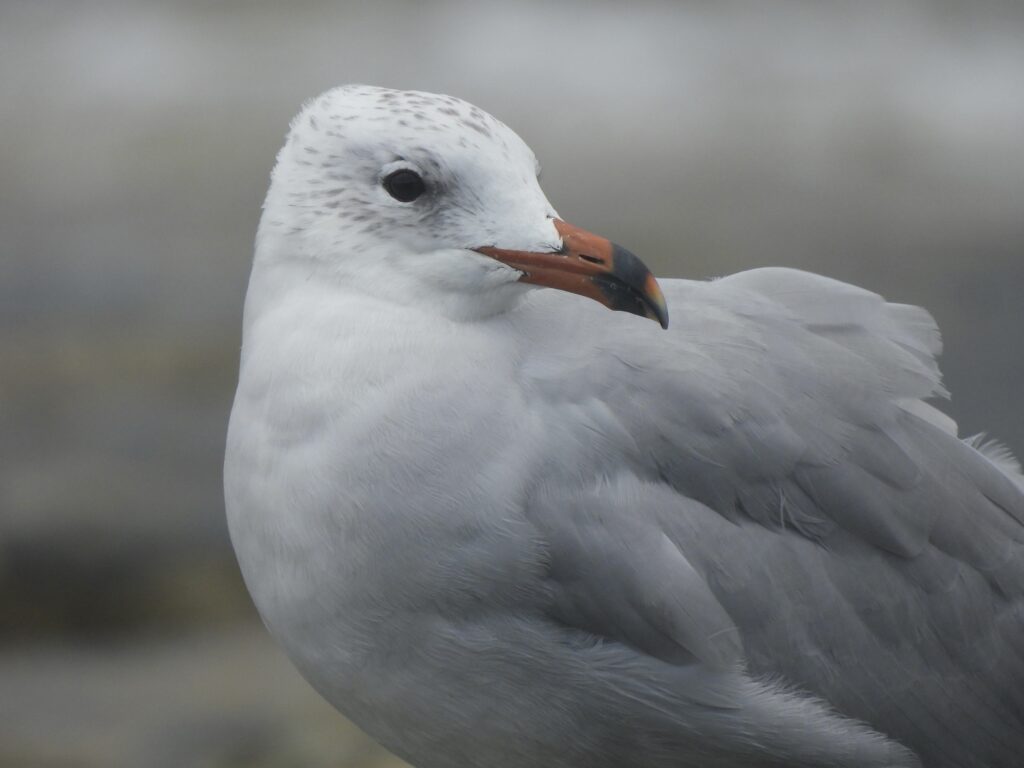
Not long ago, Audouin’s gull was a rare and threatened species across the Mediterranean. Fortunately, its population has recovered significantly, making it a more frequent sight along the western Mediterranean coast. However, it remains primarily localized to this region — a true gem of the Mediterranean.
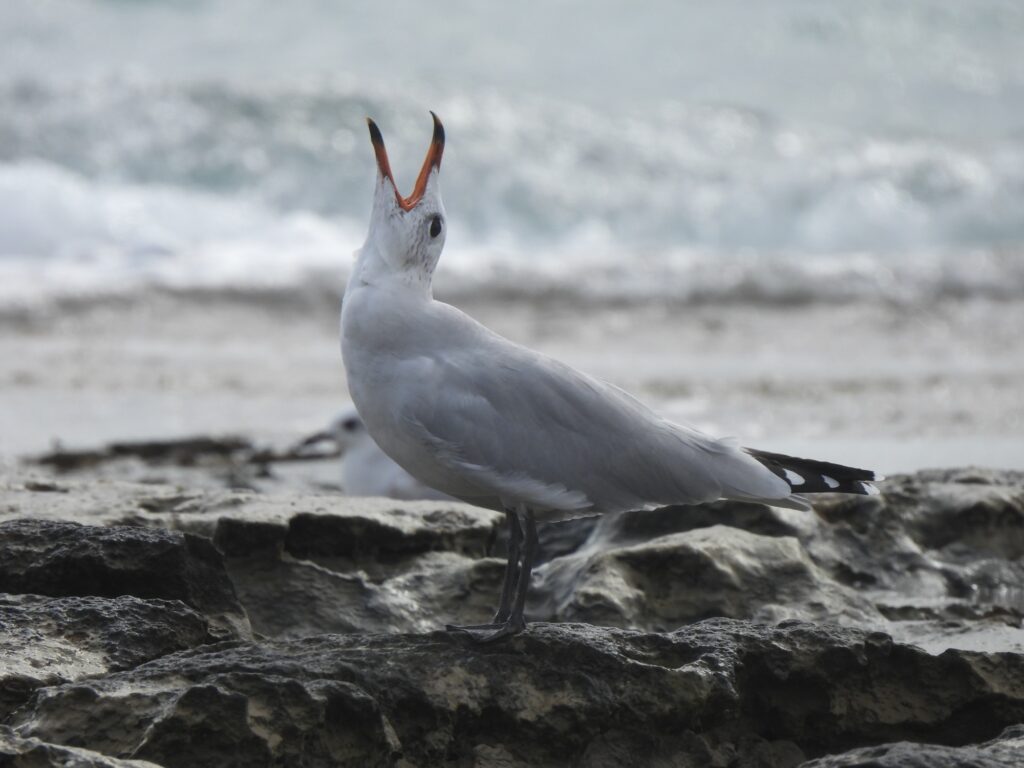
Stormy days often bring an influx of another beautiful species, the Mediterranean gull (Ichthyaetus melanocephalus), which, while less restricted to this sea than Audouin’s, is also a Mediterranean specialty. White primaries and vivid red bills and legs make adults easy to identify. Even without these features, we spotted plenty of first-year birds with dark bills, legs and primaries, along with a few second-year and adult individuals.
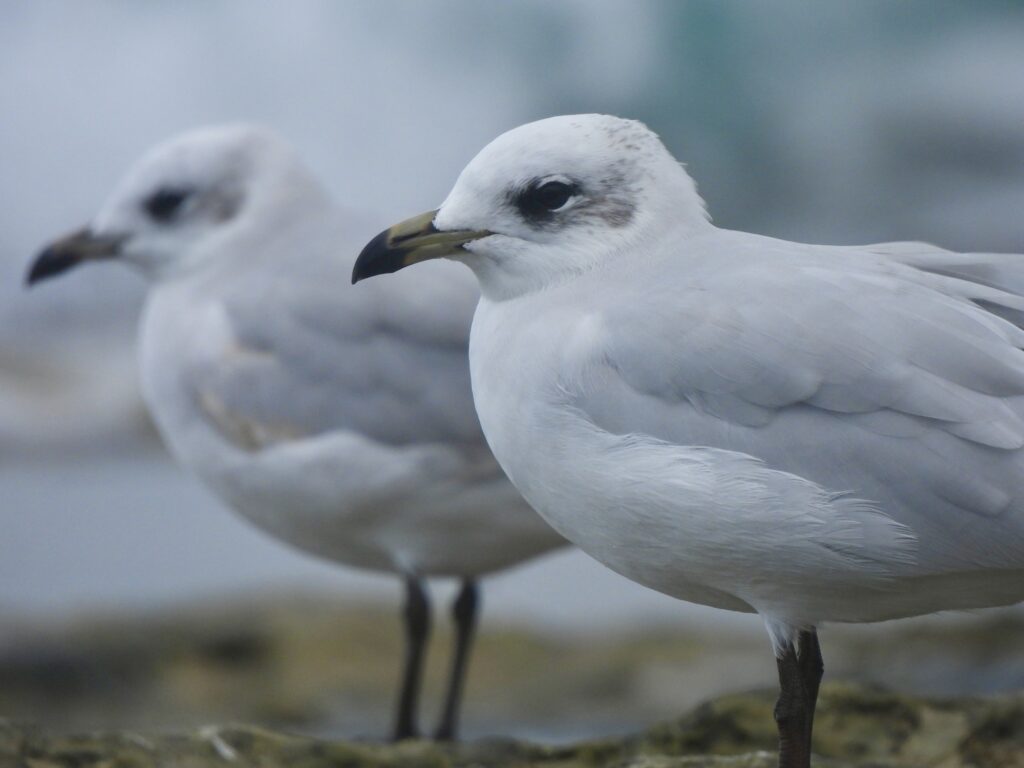
The other two smaller gull species are best identified in flight, with the black-headed gull (Chroicocephalus ridibundus) and slender-billed gull (Chroicocephalus genei) showing off a white flash in the outermost primaries framed by darker shades. Despite their similarities in winter plumage, differences in head shape and mask, bill and leg coloration made distinguishing between them straightforward.
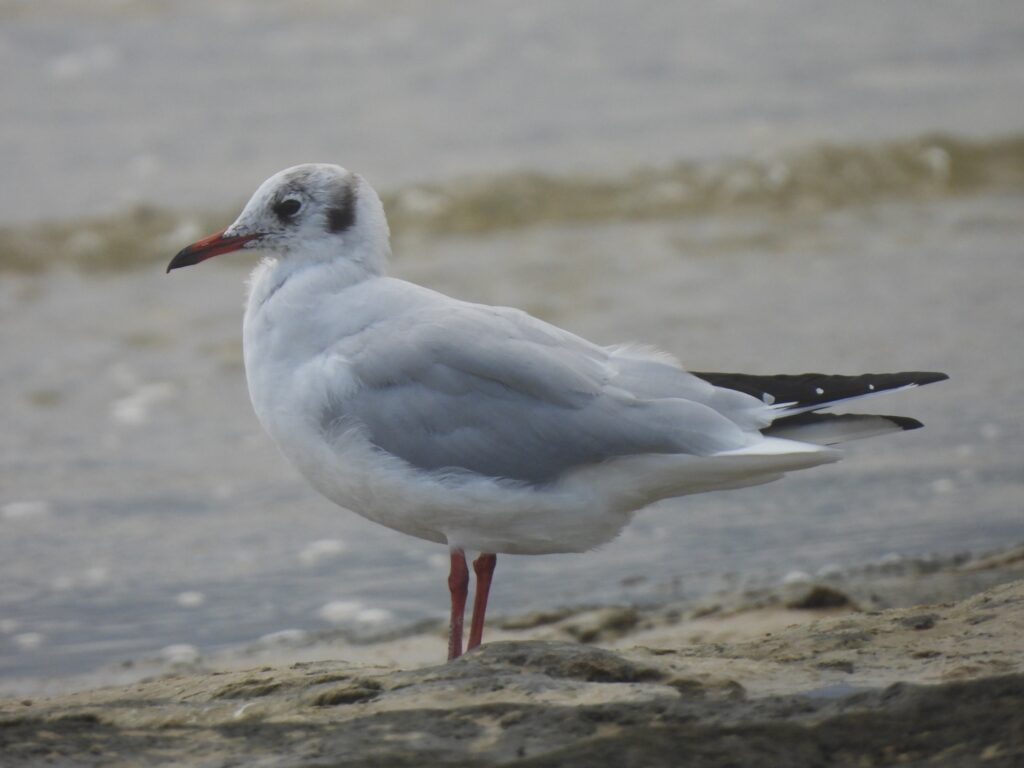
While photographing this plethora of gulls, we start to notice little pixies hopping and flapping around. The ruddy turnstones flew in and started doing their business all around us. These little birds are so industrious, flipping over pebbles in search of snacks with all the determination of someone hunting for their keys in a messy handbag.
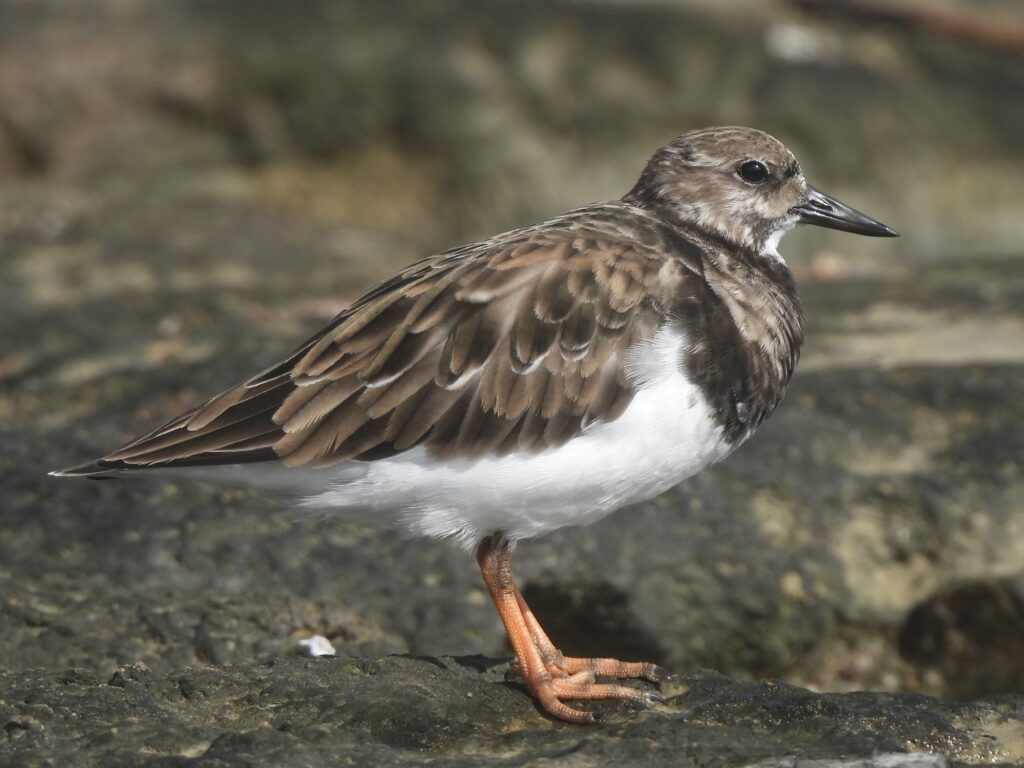
The whole shoreline was filled of tens of little pools carved in the rocks and the ruddy turnstones seemed to check out every corner of every single one of them. Someone had left their bocadillo behind and the bread ended up in one of these pools — eight turnstones joined at once, trying to peck the soggy bread while defending their little spot of shore from their fellow turnstones.
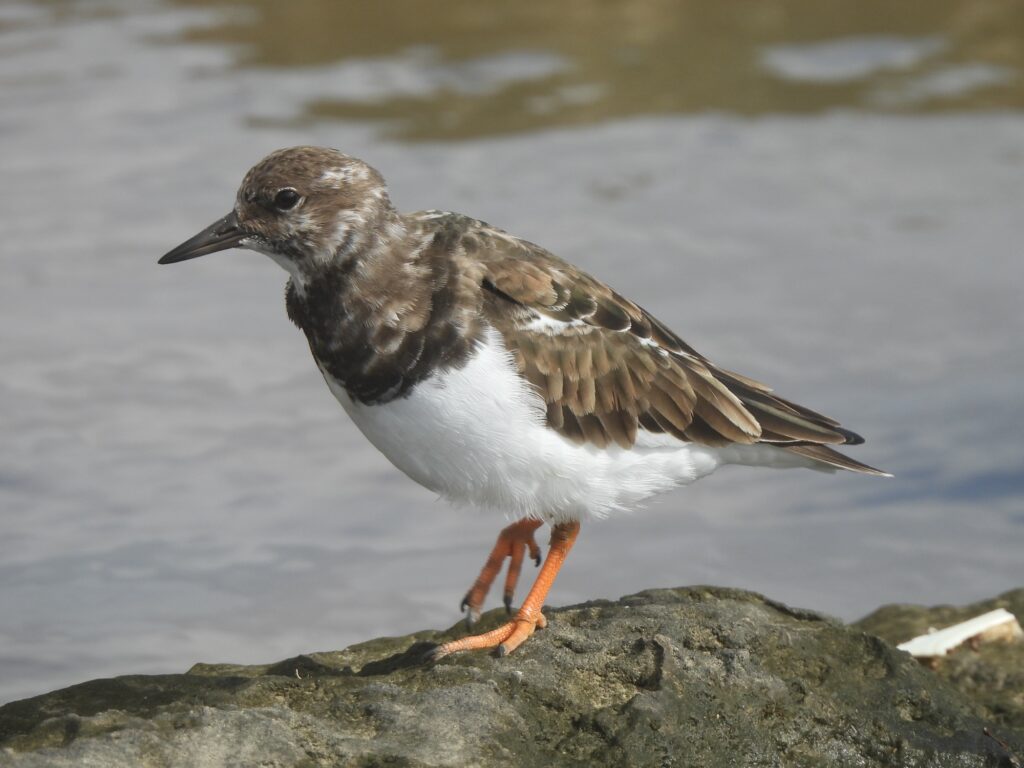
The star of the show showed up at some point, uninvited but very welcome. A regal black-bellied plover (Pluvialis squatarola) showed subdued as the juvenile birds of the species do. Unlike its hyperactive neighbors, the plover looked dignified, standing still and allowing us prolonged views at close distance. Jorge explained that adults are only to be seen for some weeks over the summer during their postnuptial migration while juveniles tend to stick around. Regardless, it is not everyday that I see one of these guys in Alicante, let alone this close.
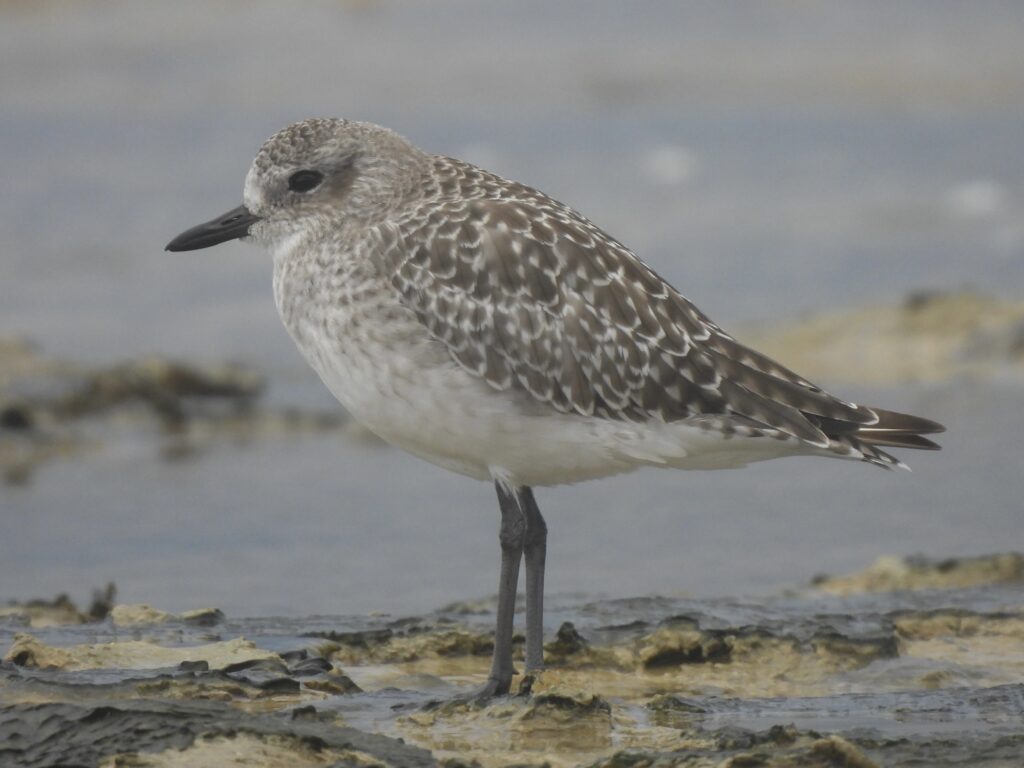
Just as my memory card was nearing capacity, Marina and Jorge pointed out a small bird they had been observing for some time. A lone sanderling (Calidris alba) had joined the turnstone gang, mimicking their behavior as though it belonged with them. Used to seeing sanderlings racing along sandy beaches, we were treated to an interesting close-up of this one in a rocky habitat. The sanderling seemed to be fighting off its own sleep, struggling to keep up with the turnstones’ energetic pace. A funny thing to witness.
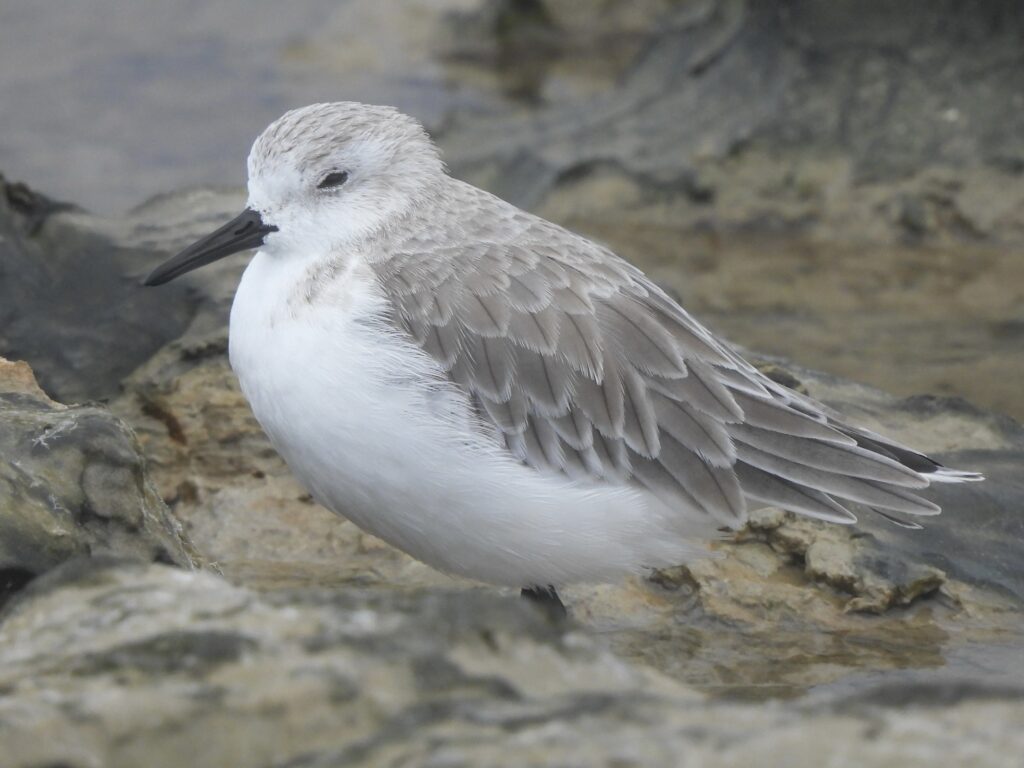
All these birds provided an incredible show and the photos that accompany this post capture just a fraction of the magic. Meanwhile, far out at sea, we noticed several fishing boats being followed by hundreds of gulls and gannets, among whom I managed to spot a Scopoli’s shearwater (Calonectris diomedea). Despite the stormy weather, I found myself wishing I could be like Ausiàs March, surrounded by these birds for just a moment. Veles e vents han mos desigs complir, faent camins dubtosos per la mar.

